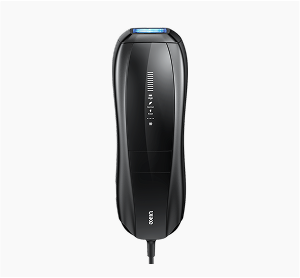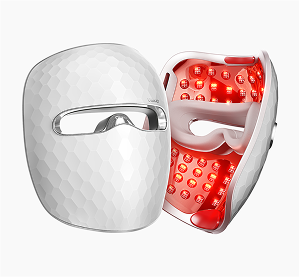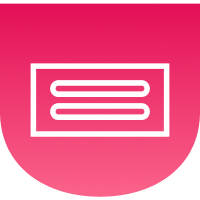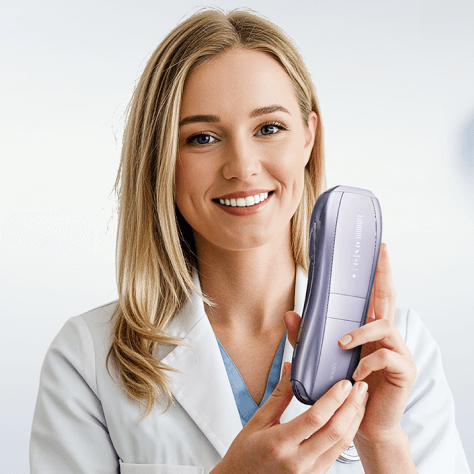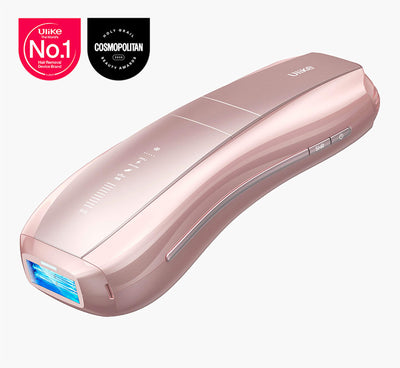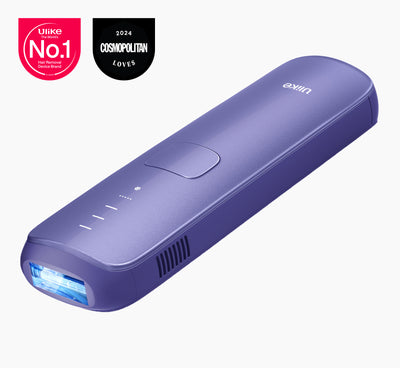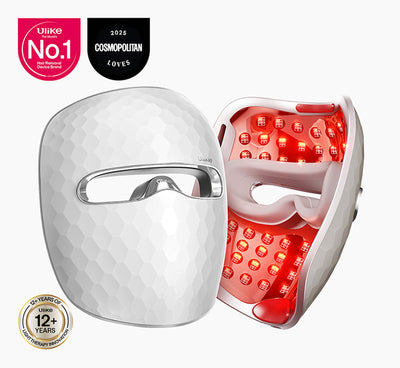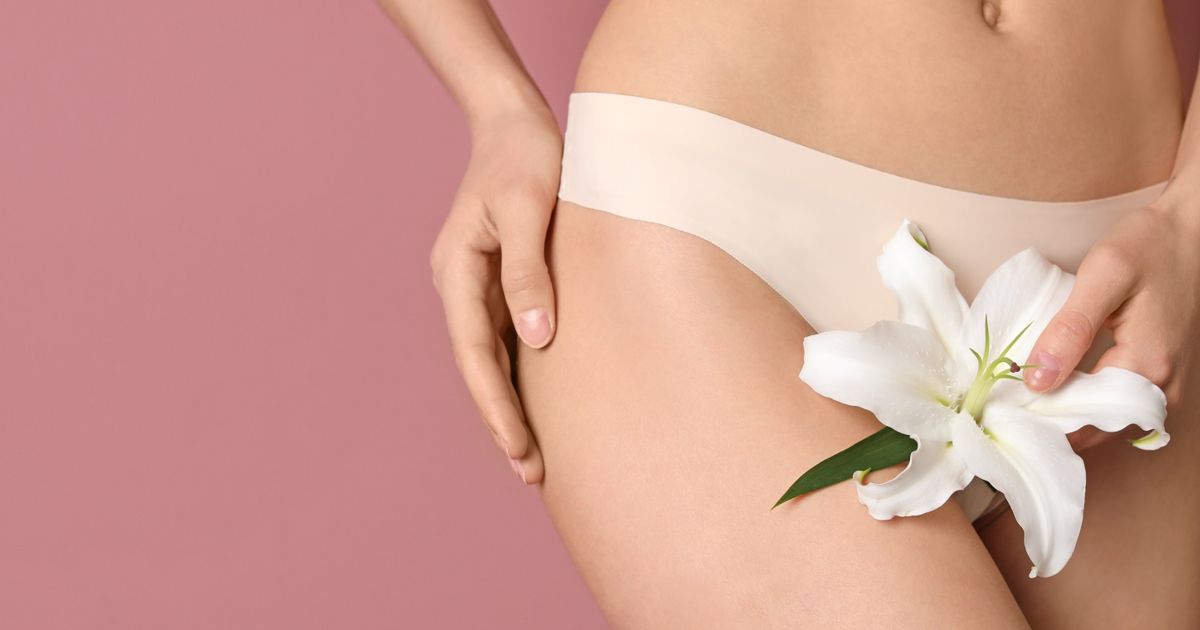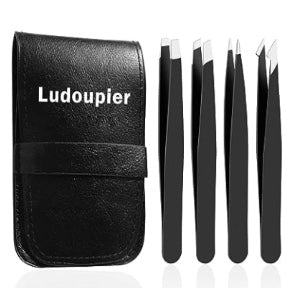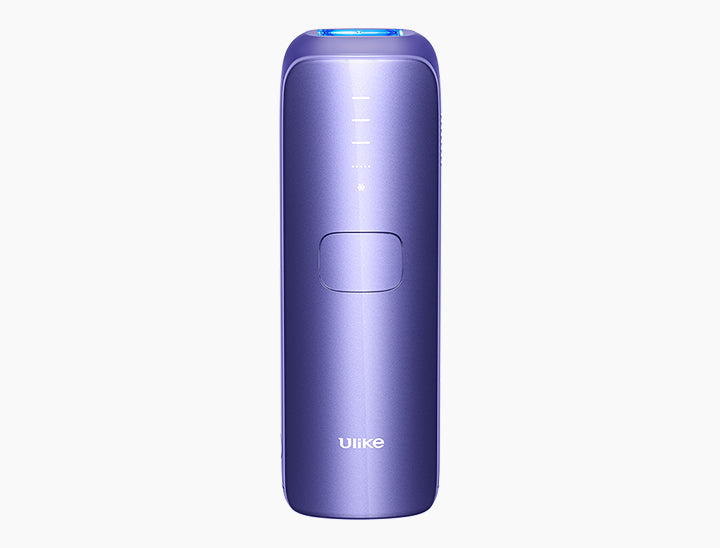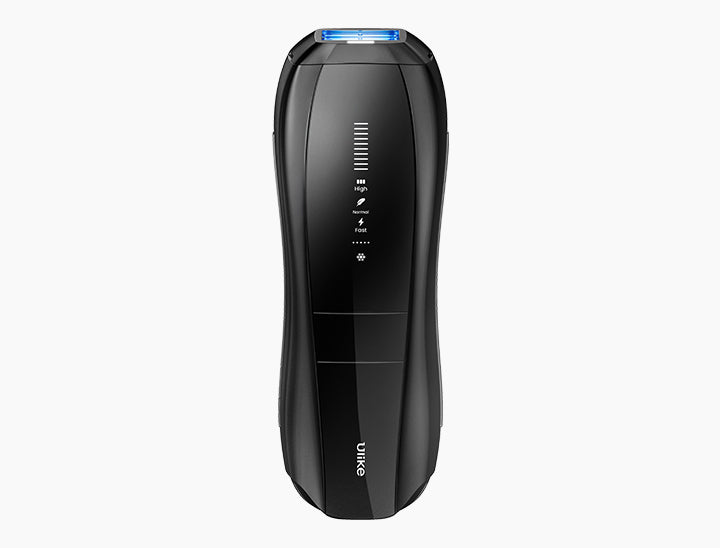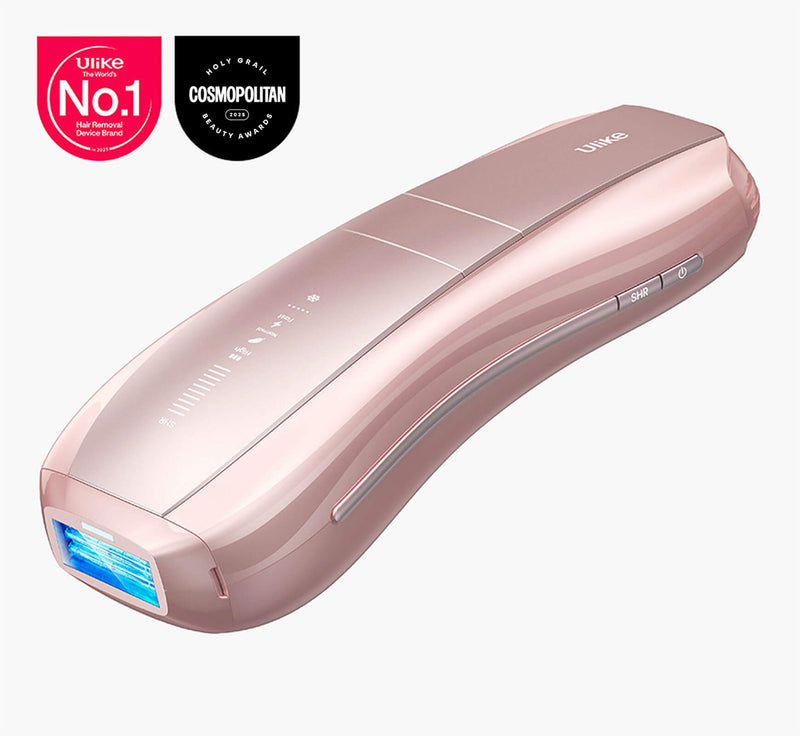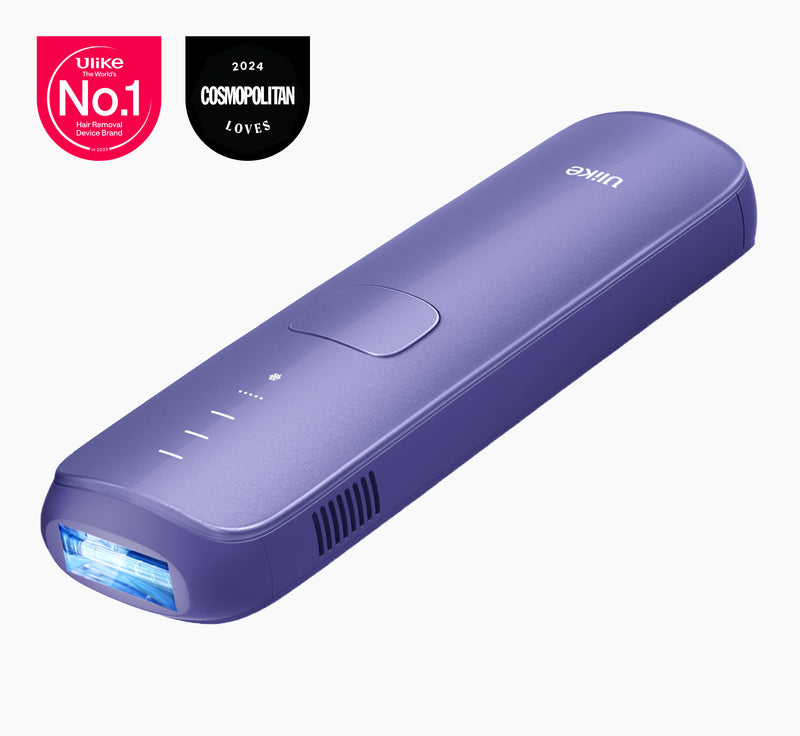Hair removal is essential to maintain the hygiene of your private parts. But, unfortunately, itching caused by hair regrowth is such a nuisance and makes everyone consider quitting hair removal. It makes you uncomfortable and disturbs your focus continuously.
Being unable to work and interact with others makes you lose confidence. Are you also suffering from pubic hair itching? You will not go anywhere because this article will provide you with a thorough guide on how to stop pubic hair itching when growing back female.
Table of Contents:
- Part 1: Why Pubic Hair Regrowth Occurs?
- Part 2: Tips to Relieve Pubic Hair Itching
- Part 3: Preventing Pubic Hair Itching
- Part 4: When to Seek Professional Help
Part 1: Why Pubic Hair Regrowth Occurs?
 To understand the concept of pubic hair regrowth, we must know about the hair growth cycle first. Your hair is formed as a result of rapid differentiation of stem cells. It is a cyclic procedure in which hair grows rapidly and the hair shaft elongates. As a result, hair is seen on the surface of the skin. The hair growth cycle comprises four phases:
To understand the concept of pubic hair regrowth, we must know about the hair growth cycle first. Your hair is formed as a result of rapid differentiation of stem cells. It is a cyclic procedure in which hair grows rapidly and the hair shaft elongates. As a result, hair is seen on the surface of the skin. The hair growth cycle comprises four phases:
- Anagen: It is the phase of rapid growth in which your hair follicle produces hair fibers continuously by differentiation. As a result, hair elongates and grows out of the skin. The phase can last for years
- Catagen: It is the transition phase in which hair follicles shrink in diameter and growth becomes slow. The hair also detaches from hair follicles during this phase. It lasts for a few days.
- Telogen: In this phase, hair follicles become dormant and no growth occurs. The length of this period varies depending on the area.
- Exogen: It is the phase during which your hair begins to fall and the beginning of the anagen phase occurs. It lasts for 2-5 months.
In this way, when you remove hair from a certain area of your body, the cycle occurs and your hair regrows. The cycle also applies to pubic hair and it can take up to 44 days for the pubic hair to grow out completely. During this time, if you do not maintain the hygiene and cleanliness you are going to feel itchy down there. The itchiness can also be due to ingrown hair caused by shaving or skin dryness. So, keep the area clean to prevent the build-up of bacteria and dead cells in the pubic area thus preventing the discomfort of hair regrowth.
Part 2: Tips to Relieve Pubic Hair Itching
Now, let’s see what you can do to relieve the recurring pubic itching that keeps you uncomfortable throughout the day.
Keep the Area Clean
The most important step is to maintain the cleanliness of the hair. The pubic area is mostly covered so people tend not to wash it often and even ignore it while showering. Continuous sweating can make it a house for bacteria and fungi to grow thus irritating.
So, keep your pubic area clean and wash it regularly, especially after extreme physical exercise. You can wash the area with warm water or use a washcloth instead. Also, avoid using scented soaps as the area is sensitive.
Hydrate the Skin
 You must have noticed that when your skin is dry you feel itchy in that area. Similar is the case for the pubic area. As it becomes dry, you start to feel an irritating sensation. Therefore, it is essential to hydrate the area after every shower to prevent it from drying.
You must have noticed that when your skin is dry you feel itchy in that area. Similar is the case for the pubic area. As it becomes dry, you start to feel an irritating sensation. Therefore, it is essential to hydrate the area after every shower to prevent it from drying.
You can use natural oils like coconut oil, almond oil, pure shea butter, or even aloe vera extract for this purpose. A mild moisturizer according to your skin type can also serve the purpose.
Avoid Scratching
 Scratching can make things worse. It is our natural habit that whenever we feel itchy anywhere, we would want to scratch it. Scratching provides fuel to fire. As a result, the area will become even more itchy and we will start aggressive scratching.
Scratching can make things worse. It is our natural habit that whenever we feel itchy anywhere, we would want to scratch it. Scratching provides fuel to fire. As a result, the area will become even more itchy and we will start aggressive scratching.
The pubic area is sensitive therefore aggressive scratching can not only increase your will to scratch but also disrupt your skin. It will also increase the risk of infection which means even more itching. So, avoid scratching no matter what.
Use Cool Compress
A cool compression can cool down your itching. It is a home remedy you can try to soothe pubic itching quickly. It numbs the area and decreases any inflammation that has occurred. But, you cannot apply ice cubes directly on your skin.
Wrap the cubes in a cloth and apply it gently for 30 seconds to one minute on the area. You will feel an instant relief.
Try Oatmeal Bath
 Lastly, you can use the oatmeal bath to minimize itching in the vulvar region. Colloidal oatmeal is anti-inflammatory and antioxidant in nature. Using it in the bath can also help hydrate your skin. Being rich in water-binding Polysaccharides, it can help retain moisture and prevent skin dryness.
Lastly, you can use the oatmeal bath to minimize itching in the vulvar region. Colloidal oatmeal is anti-inflammatory and antioxidant in nature. Using it in the bath can also help hydrate your skin. Being rich in water-binding Polysaccharides, it can help retain moisture and prevent skin dryness.
It also cleanses your skin, is an antiviral, and is a buffering agent to maintain the pH of your skin. So whenever you feel irritation down there opt for an oatmeal bath.
Part 3: Preventing Pubic Hair Itching
Another way to relieve pubic hair irritation is to just prevent it. Let’s see what steps to take.
Try Regular Exfoliation
Exfoliating the vulvar region regularly can help prevent the collection of dirt, dead cells, bacteria, and fungi. All these are a great risk factor in causing pubic hair itching.
Moreover, regular exfoliation can help your fresh skin come out. As there is no build-up of dead cells, the shaved hair can come out of your soft skin more easily. This minimizes the risk of ingrown hair. You can use an exfoliating scrub or gloves to gently rub off the dead cells and clean your skin.
Learn Proper Shaving Techniques
 Your shaving technique matters a lot. If you are not shaving properly or using an old razor, you are inviting ingrown hair and cuts to occur on your skin.
Your shaving technique matters a lot. If you are not shaving properly or using an old razor, you are inviting ingrown hair and cuts to occur on your skin.
The proper shaving techniques involve the following:
- Use a clean and sharp razor to avoid resistance between your skin and the razor
- Hold your skin slightly taut and use the razor in the same direction as your hair growth
- Never shave without a shaving cream. Shaving creams provide lubrication to your skin letting the razor glide smoothly across the surface of your skin
- Rinse your blade with every stroke and apply a moisturizer afterwards
If you are afraid of shaving with creams and gel, you can try natural products like coconut oil. For more, read Shaving with Coconut Oil
Trim Instead of Shaving
Opting for trimming instead of shaving can also be a smart choice. You just need your hair to be smaller and that can be done by trimming them. This reduces the occurrence of ingrown hair. Furthermore, it is natural for the area to feel itchy as your coarse hair is coming out of the skin after shaving. Hence, trimming can be a better choice since there will not be stubble coming out of your skin anymore.
However, keep in mind that trimming requires frequent touch-ups and you cannot be as smooth as it feels after a shave.
Wear Loose-fitting Clothes
 Your choice of clothes can also play a role in causing the itching. For instance, when you are wearing tight-fitting clothes there is no flow of air. This means the sweat will accumulate there instead of drying. Additionally, tight clothes increase the friction between the cloth and the skin leading to skin irritation.
Your choice of clothes can also play a role in causing the itching. For instance, when you are wearing tight-fitting clothes there is no flow of air. This means the sweat will accumulate there instead of drying. Additionally, tight clothes increase the friction between the cloth and the skin leading to skin irritation.
They also cause ingrown hair. So while choosing your underwear or other clothes, make sure they are breathable and loose.
Avoid Harsh Products
Harsh products are not good for your skin as they can react with it and cause redness, inflammation, irritation, and allergic reactions. These products are not good for your normal skin like arms, hands, and feet. Then what about the pubic area?
It is already susceptible and harsh chemicals can cause inflammatory reactions, burning, and itching down there. So go for gentle products with no fragrance, formaldehyde, or paraffin in them.
Part 4: When to Seek Professional Help
There are times when your home remedies or precautions do not work and a professional’s interference is necessary. Let’s understand when to call a professional:
- When the itching is persistent and there is not even a slight relief even after using cold compresses, oatmeal baths, or using other soothing products on the skin
- When you see any signs of infection, do not delay your meeting with a professional. These include rashes, burning sensation, redness, swelling, soreness, and pain in the vulvar region
Conclusion
Pubic hair itching while regrowth is very common due to unhygienic conditions, skin dryness, and ingrown hair. The discomfort caused by irritation can be reduced by maintaining hygiene, using cool compressions, oatmeal baths, and a mild moisturizer.
To prevent itching, regular exfoliation, the right choice of clothes, and topical products are essential. Moreover, the right shaving cream can contribute to eliminating the chances of itching. But if none of the above-mentioned tips help you then it’s best to contact a professional to stay comfortable and make regrowth itch-free.


